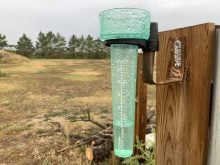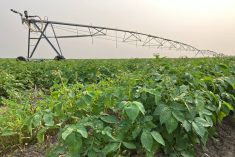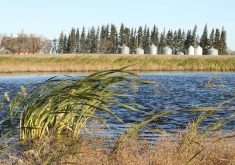Glacier FarmMedia – The organization that represents Alberta’s irrigation districts is spearheading a project that will better allow stakeholders in the South Saskatchewan River Basin to improved watershed planning.
The project will use the South Saskatchewan River Operational Model (SSROM) to determine how to best develop infrastructure to benefit Albertans, said Margo Jarvis Redelback, executive director of the Alberta Irrigation Districts Association.
The SSROM has been developed to provide predictive modelling in the basin, drawing together information from its three main river systems: the Bow, Oldman and South Saskatchewan.
Read Also

Alberta Pulse Growers fuelling young athletes with local protein source
A one-year partnership with School Sports Alberta to highlight benefits of pulses in student athletes’ diets in province’s 400-plus schools.
Redelback said the AIDA project will use the tool to put together the puzzle pieces of the different needs in the basin to develop a picture of how to best evolve projects that will support socio-economic development under different climatic conditions.
As a result of the SSROM work, including recent updates, Redelback said it was time to sit down with stakeholders and develop updated strategies.
“My sector, in particular, felt that it was important to go through another exercise that looked at how best to enhance water management to maintain and extend economic development in the SSRB,” she said.
With just about every major economic driver in southern Alberta tied to the basin, as well as population growth, Redelback said this project will be able to collect information from proposed projects and measure the different impacts to sectors in the system.
That includes examining proposals that have been advanced in recent years, such as a new dam upstream of Calgary, the Eyremore Dam near Brooks and expansion of irrigation in the Oyen region.
“What this current project does is brings a number of different stakeholders together to look at those projects, allows stakeholders to propose additional new options or projects and allows everybody to sit around and input those strategies into the model,” she said.
With those inputs, the project will be able to stress test the initiatives against current demand and seed how they would interact in combination with each other under different river stream flow scenarios.
“You kind of get to play and say, ‘I have an idea and I’d like to see how it fits in with how water is managed through the entire basin,’ ” said Redelback.
That may result in benefits or potential negative impacts on supply, she added.
“It’s a safe place to evaluate and look at what the model gives you in terms of impacts to flow regimes, shortages and things like that,” she said.
Unlike some academic river modelling, Redelback said the SSROM provides a more current dataset based on up-to-date information from the major stakeholders using the basin.
“It’s essentially in line with what the water users are using today, within the last year or two,” she said.
Additionally, various scenarios can be played out quickly — in minutes — among numerous stakeholders plugging in different projects.
“That’s the strength in the project — the collaborative nature with people from all different sectors at the table and everybody is looking, learning and understanding how complex water management is,” said Redelback.
The provincial government is also backing further utilization of the SSROM, recently awarding WaterSMART a contract to use the tool to help develop strategies in Alberta if drought conditions continue.
– Alex McCuaig is a reporter with The Western Producer.















